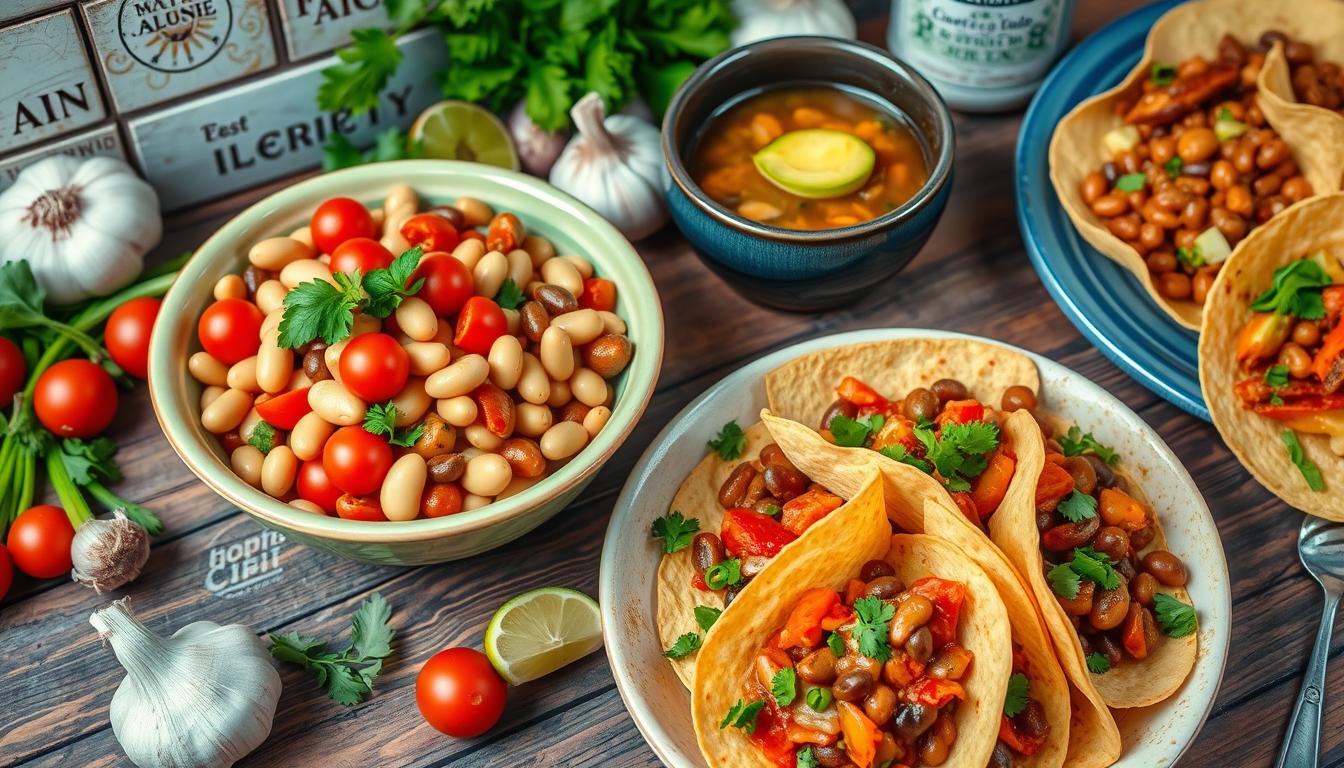
Cooking beans is a great way to add diabetic recipes to your meals. It encourages healthy eating habits. Beans are full of nutrients and can help manage diabetes if cooked right.
For those with diabetes, eating well is key to keeping blood sugar levels stable. Beans are perfect for a diabetic diet because they’re rich in fiber and protein. They’re great for diabetic recipes that aim for healthy eating.
It might seem hard to cook beans, but it’s actually easy with the right methods and ingredients. Learning to cook beans for diabetics lets you make many tasty and healthy diabetic recipes.
Understanding Why Beans Are Great for Diabetics
Beans are a great choice for diabetics because they help control blood sugar and support health. They have a special mix of nutrients that makes them perfect for a diabetic diet.
Beans don’t raise blood sugar levels much because of their low glycemic index. They also have a lot of fiber, which helps you feel full longer. This can help you eat less and manage your weight, which is important for diabetics.
The Glycemic Index of Different Beans
Beans have different glycemic indexes, but most are low. Knowing this can help diabetics choose the right beans for their diet. It helps keep blood sugar levels in check.
Fiber Content and Blood Sugar Control
Beans are full of fiber, which is good for controlling blood sugar. Fiber slows down how sugar is digested and absorbed. This prevents blood sugar from rising too fast, making beans a key part of a diabetic diet.
Protein Benefits for Diabetic Diets
Beans are also a good source of protein, which is important for health and blood sugar control. Protein takes longer to digest than carbs, which helps keep blood sugar stable. It also makes you feel full, which is good for diabetics.
Adding beans to their diet can help diabetics manage their blood sugar and improve their health. Beans fit well with the goals of a diabetic diet.
| Type of Bean | Glycemic Index | Fiber Content | Protein Content |
|---|---|---|---|
| Kidney Beans | 30 | 8g | 15g |
| Black Beans | 30 | 9g | 15g |
| Pinto Beans | 35 | 9g | 15g |
Essential Preparation Steps Before Cooking
Before starting with bean cooking methods, it’s key to prepare beans properly. Sorting, rinsing, and soaking are the first steps. These steps make sure beans are clean and ready for cooking, which is important for diabetic diets.
Begin by sorting beans to remove stones, debris, or damaged ones. Then, rinse them with cold water to get rid of dirt. Soaking is also vital. It rehydrates the beans and shortens cooking time. There are two soaking methods: long soak and quick soak.
- Long soak: Soak the beans in water for at least 8 hours or overnight.
- Quick soak: Boil the beans in water for 2-3 minutes, then let them soak for 1 hour.
After soaking, drain and rinse the beans again. This removes any leftover impurities and excess salt. By doing these steps, those on diabetic diets can cook beans safely and effectively using different bean cooking methods.
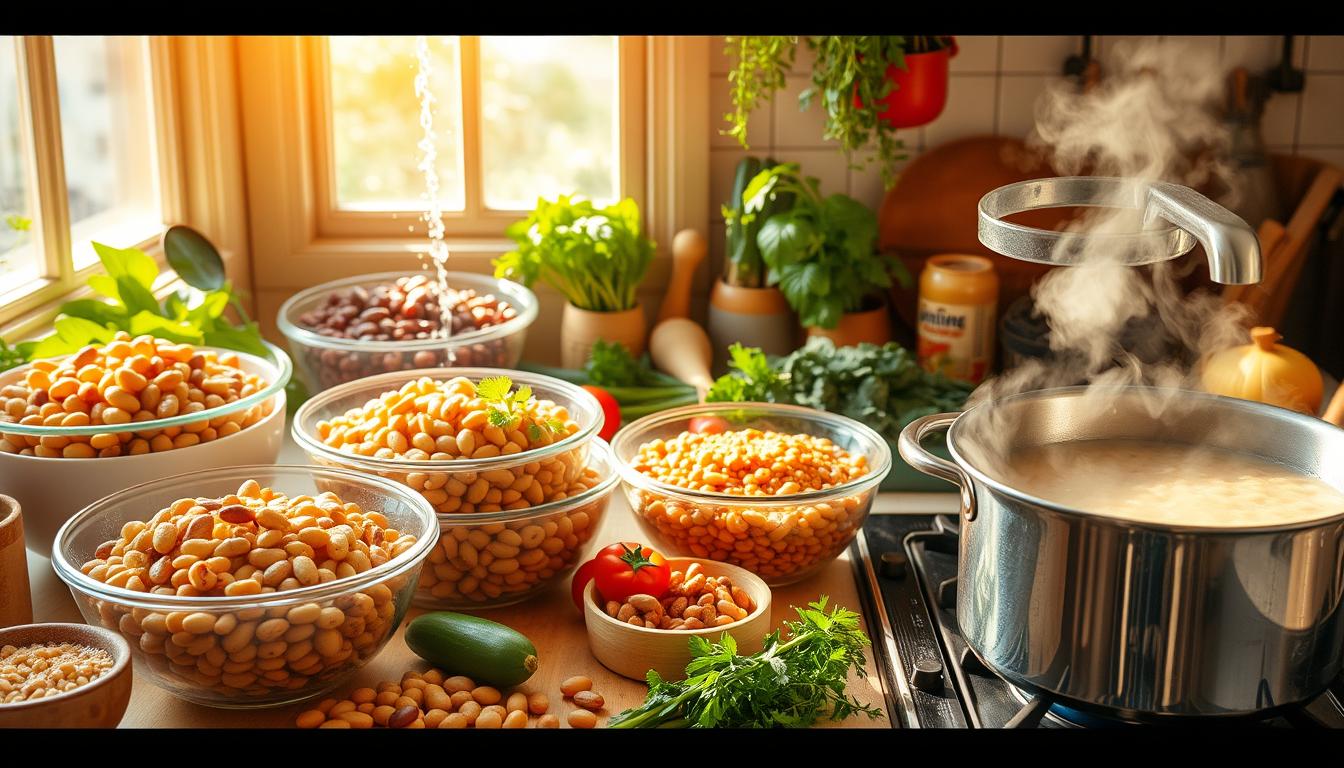
Always follow safe food handling when preparing and cooking beans. This prevents foodborne illness. With these steps and a bit of practice, you’ll make tasty and healthy meals with beans in your diabetic diets.
How to Cook Beans for Diabetics: Basic Methods
Cooking beans is easy, and you can use stovetop, pressure cooker, or slow cooker methods. Each way has its own advantages. Knowing the basics helps you make tasty, healthy meals for diabetics.
It’s key to pick the right cooking time and method for tender, digestible beans. Stovetop is quick, pressure cookers are fast, and slow cookers are great for cooking while you’re out.
Cooking Methods Comparison
- Stovetop: 1-2 hours, high heat, constant monitoring
- Pressure Cooker: 30-60 minutes, high pressure, minimal monitoring
- Slow Cooker: 6-8 hours, low heat, no monitoring
Cooking beans is a smart way to boost protein, fiber, and nutrients in a diabetic diet. By using these basic methods, you can make healthy, tasty meals that fit your dietary needs.
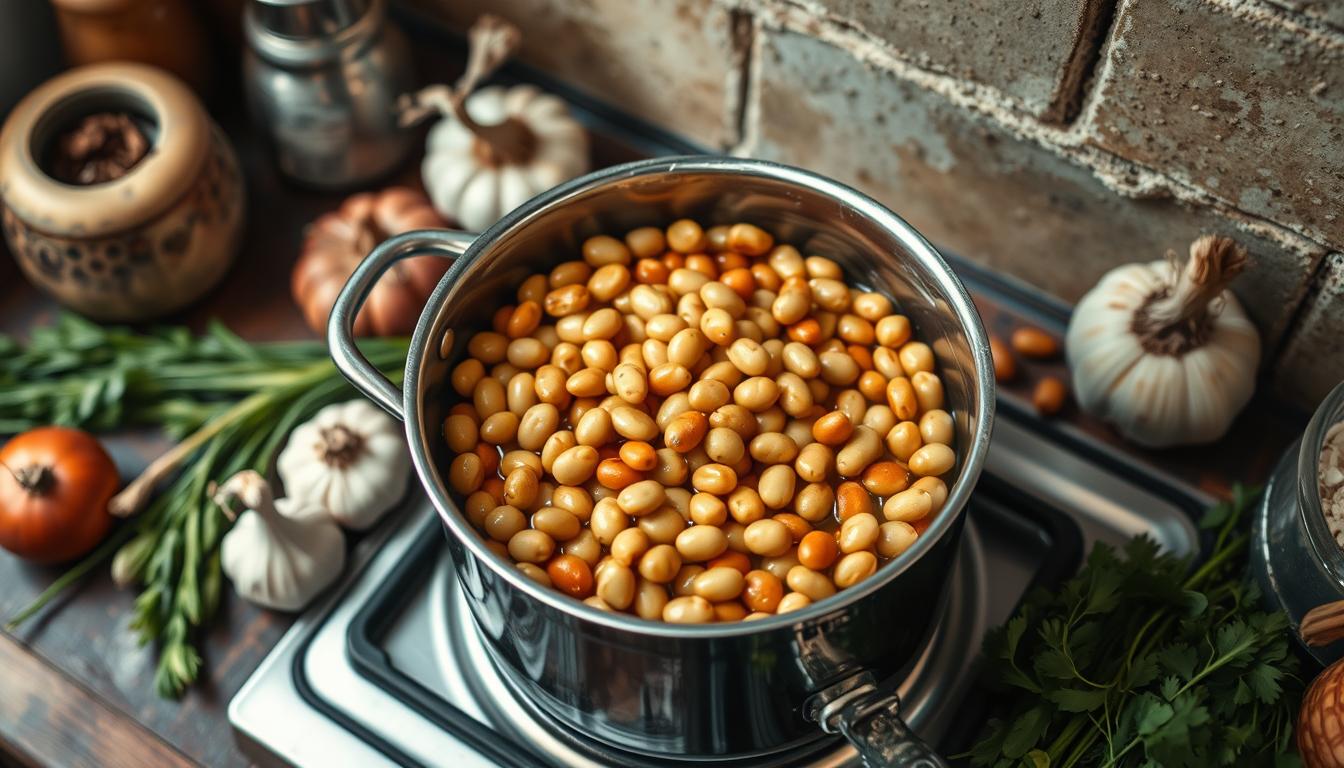
Always follow safe food handling practices. Also, talk to a healthcare professional or registered dietitian for personalized dietary advice.
| Cooking Method | Cooking Time | Benefits |
|---|---|---|
| Stovetop | 1-2 hours | Quick, easy, and versatile |
| Pressure Cooker | 30-60 minutes | Fast, energy-efficient, and nutritious |
| Slow Cooker | 6-8 hours | Convenient, hands-off, and healthy |
Selecting the Right Beans for Your Diet
Choosing the right types of beans can be tough. For those with diabetes, picking diabetic-friendly beans is key. Each bean has its own nutritional benefits, making some better for diabetics than others.
Popular types of beans include kidney beans, black beans, and chickpeas. They’re packed with fiber, protein, and complex carbs. This makes them great for diabetic diets. Diabetic-friendly beans help control blood sugar and keep you full, cutting down on unhealthy snacks.
- Nutritional content: Look for beans high in fiber and protein, and low in carbohydrates.
- Glycemic index: Choose beans with a low glycemic index to minimize blood sugar spikes.
- Preparation method: Select beans that are easy to cook and incorporate into your meals.
Knowing about the different types of beans and their nutrients helps you make better choices. You can pick diabetic-friendly beans that are good for your health and well-being.
Seasoning Options that Won’t Spike Blood Sugar
Seasoning is key when cooking beans for diabetics. It adds flavor without harming health. Choosing the right seasoning can greatly improve taste and nutrition. Low-sodium seasoning is crucial to avoid blood sugar spikes.
There are many ways to flavor beans without salt or sugar. Herb and spice combinations offer a variety of tastes. Cumin, coriander, and paprika add a deep, earthy flavor. Lemon juice or vinegar can also enhance flavors, creating a more complex taste.
Exploring Salt Alternatives
For diabetics, salt alternatives are vital. Instead of regular salt, use herbs and spices. Salt-free seasoning blends are also available in health food stores or online. Here are some good alternatives:
- Herbs like basil, oregano, and thyme
- Spices like cumin, coriander, and turmeric
- Acid ingredients like lemon juice or vinegar
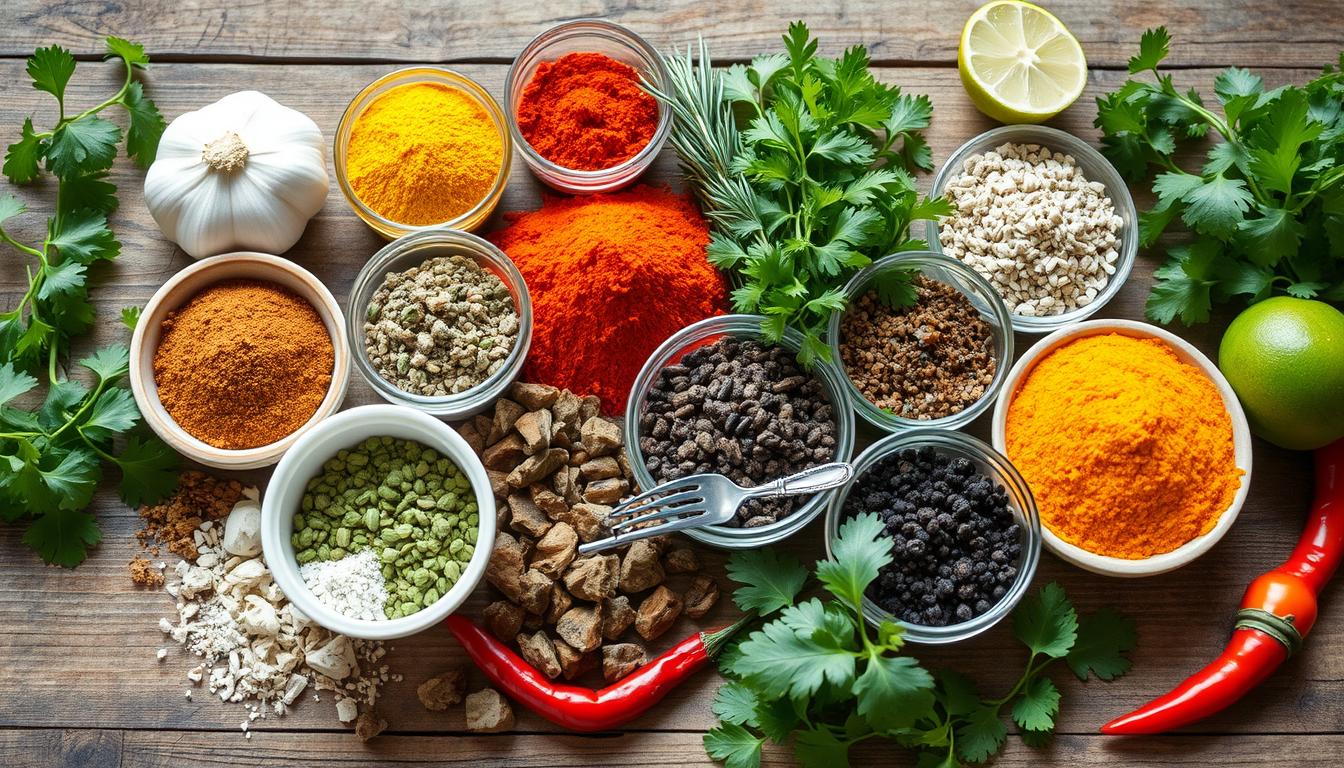
Flavor-Boosting Techniques
There are many ways to enhance bean flavors. Using low-sodium seasoning and salt alternatives is key. Here are some techniques:
| Technique | Description |
|---|---|
| Roasting | Roasting beans in the oven brings out their sweetness and adds a rich, nutty flavor. |
| Sauteing | Sauteing beans with garlic and onions adds a savory taste and creates a delicious sauce. |
| Simmering | Simmering beans in a flavorful broth infuses them with a rich, meaty taste. |
By applying these techniques and using low-sodium seasoning, you can make tasty, healthy bean dishes for diabetics.
Portion Control and Serving Suggestions
Managing diabetes means controlling portions. It’s key to measure and control cooked beans for a balanced diet. A diabetic meal planning approach should focus on healthy portions of protein, fiber, and complex carbs.
To get this right, try these tips:
- Eat a variety of foods, including beans, whole grains, and lean proteins
- Measure portions using a food scale or measuring cups
- Plan meals in advance to ensure balanced and healthy portions
For instance, pair cooked beans with roasted veggies and a small whole grain bread. This mix offers protein, fiber, and complex carbs. It’s a great choice for diabetic meal planning.
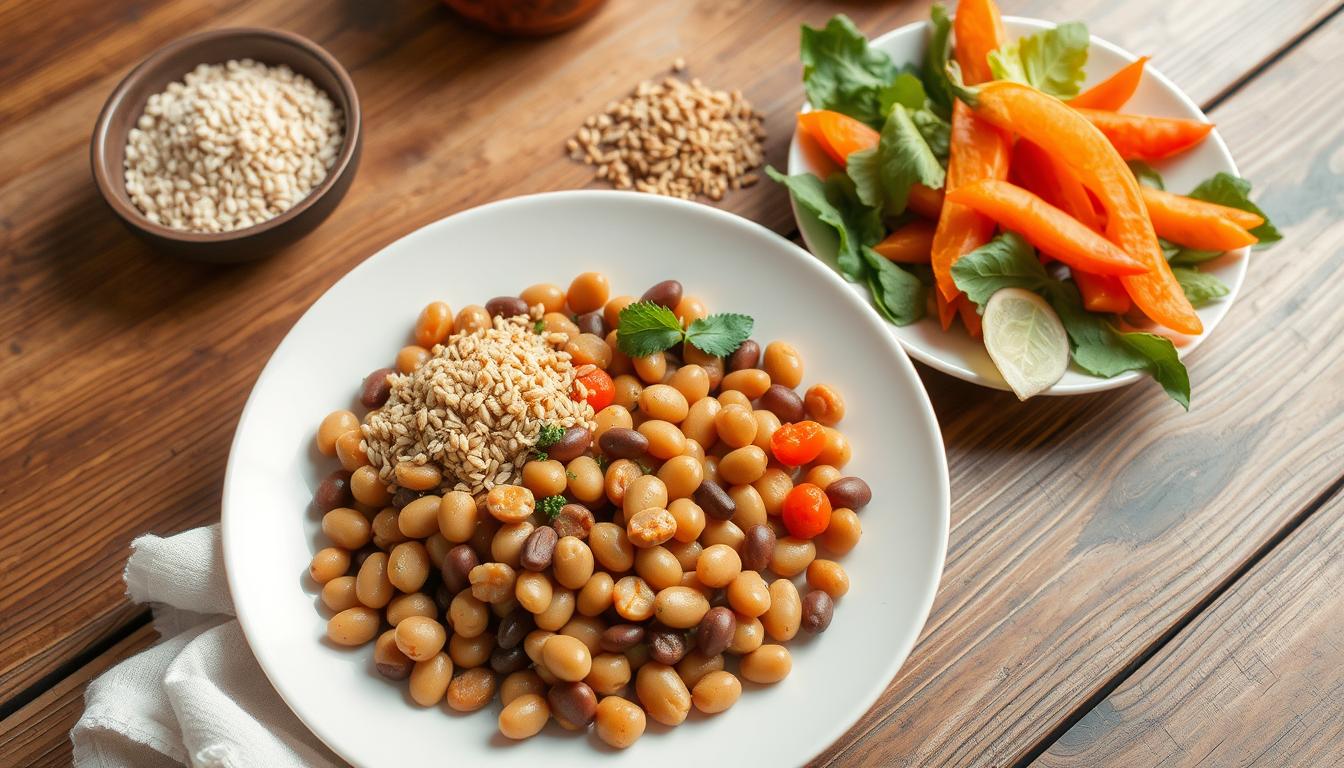
By using these tips and focusing on healthy portions, you can keep your meals balanced and nutritious. This supports your health and well-being.
Common Cooking Mistakes to Avoid
When cooking beans, it’s key to know common mistakes that can ruin your dish. Overcooking is a big problem, as it makes beans lose nutrients and become unappetizing. To fix this, watch the cooking time and temperature closely. This ensures the beans are just right.
Also, bean storage is crucial. Wrong storage can cause beans to spoil or get contaminated. Store cooked beans in airtight containers in the fridge at 40°F (4°C or less). This stops bacteria and keeps your food safe.
Overcooking Issues
Overcooking beans can make them mushy and unappealing. To avoid this, use a pressure cooker or slow cooker. These tools help you control cooking time and temperature better.
Seasoning Errors
Seasoning mistakes can happen, too, when trying new recipes. To fix this, taste and adjust the seasoning as you cook. This ensures the flavors are just right.
Storage Mistakes
Storage errors are common when cooking beans. To avoid them, use airtight containers and keep beans in the fridge at 40°F (4°C or less). This keeps them fresh and safe to eat.
Some common cooking mistakes to avoid when cooking beans include:
- Overcooking or undercooking the beans
- Not using the right storage containers or methods
- Not tasting and adjusting the seasoning as you go
- Not monitoring the cooking time and temperature
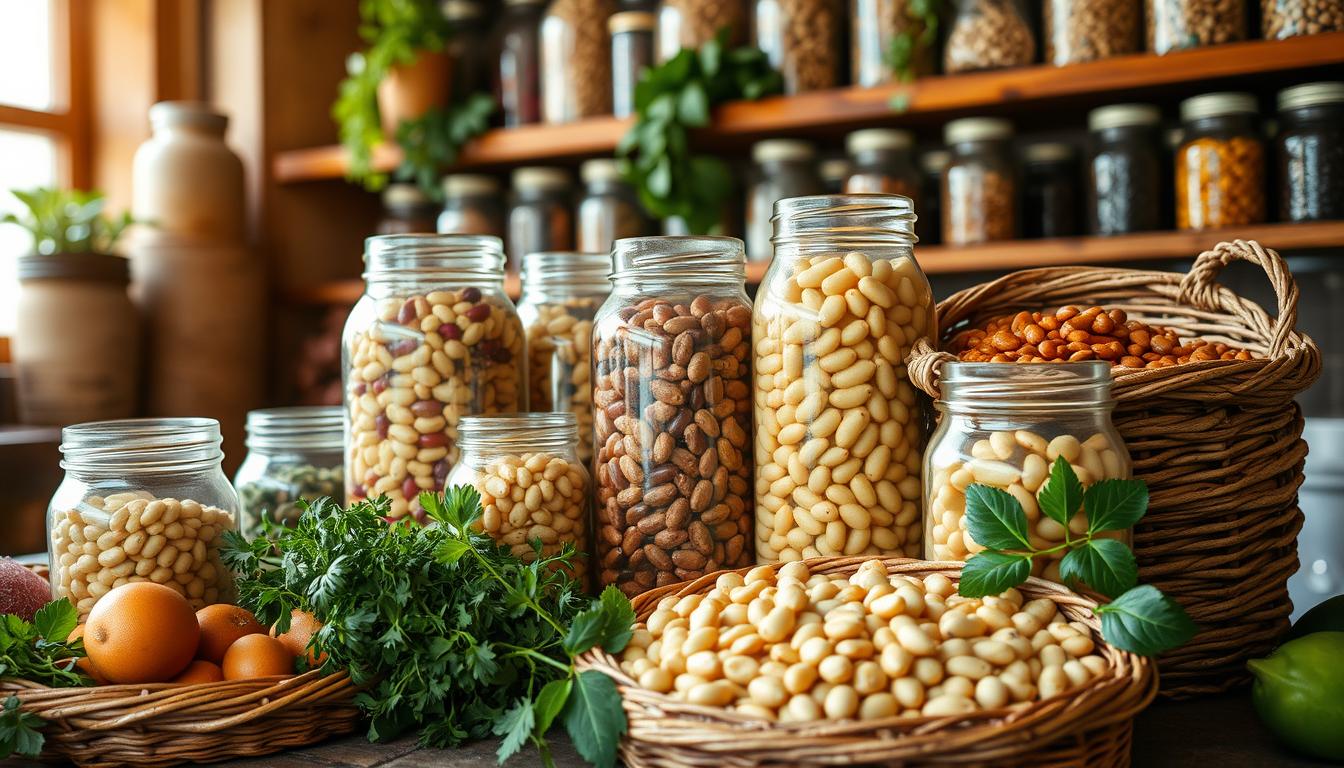
Knowing these common mistakes and how to avoid them helps make your bean dishes tasty, healthy, and safe. Cooking for yourself or others means focusing on food safety and quality. Use the right techniques and ingredients for the best results.
| Common Cooking Mistakes | Prevention Methods |
|---|---|
| Overcooking | Monitor cooking time and temperature |
| Seasoning errors | Taste and adjust seasoning as you go |
| Storage mistakes | Use airtight containers and store in refrigerator |
Meal Planning with Cooked Beans
Incorporating beans into your diet is a smart move for diabetics. They add protein, fiber, and flavor to your meals. Cooking beans in advance makes them easy to add to many dishes.
Here are some tips to start using beans in your meals:
- Plan your meals for the week ahead and list the ingredients, including beans.
- Cook a big batch of beans on the weekend and use them in different meals all week.
- Try different seasonings and spices to flavor your beans without adding salt or sugar.
Here are some meal ideas with beans:
- Bean and vegetable salads with mixed greens, cherry tomatoes, and citrus vinaigrette.
- Bean soups like black bean or lentil soup with whole grain bread.
- Bean and rice bowls with roasted veggies and tahini sauce.
By following these tips and being creative, meal planning for diabetics becomes easy and fun. Adding beans to your diet can greatly improve your health and well-being.
Conclusion: Making Beans a Healthy Part of Your Diabetic Diet
Beans are a great choice for a healthy diabetic diet. They have a low glycemic index and are high in fiber and protein. This makes them a smart way to keep blood sugar levels in check.
By learning how to prepare them and trying different types, you can add beans to many tasty meals. This helps you stick to a diet that’s good for your diabetes.
Beans do more than just help with blood sugar. They’re also full of vitamins, minerals, and antioxidants. Eating them can make you feel full, energized, and in charge of your diabetes.
So, start adding beans to your meals regularly. Look for new recipes and cooking methods. Find the beans you like best. With a bit of creativity and a focus on your health, you can make a balanced, diabetes-friendly diet a reality.
FAQ
What are the benefits of cooking beans for diabetics?
Beans are great for diabetics because they have a low glycemic index. They are also high in fiber and protein. This helps keep blood sugar levels stable and keeps you full.
How do different types of beans compare in terms of their nutritional value for diabetics?
Beans like kidney beans, black beans, and chickpeas have similar benefits. They are low in glycemic index, high in fiber, and rich in protein. These qualities make them good for a diabetic diet.
What are the essential preparation steps before cooking beans?
Before cooking, sort, rinse, and soak the beans. This removes debris and prepares them for cooking. It ensures they cook evenly and taste great.
What are the best cooking methods for preparing beans for diabetics?
The best methods include stovetop simmering, pressure cooking, and slow cooking. These methods keep the beans’ nutrients and flavor intact. They also make sure the beans are fully cooked.
How can I season beans without spiking my blood sugar?
To season beans without raising blood sugar, use herbs and spices. Try rosemary, thyme, and oregano. Use salt-free spice blends for flavor without added sugars or sodium.
How should I portion and serve cooked beans to maintain a balanced diabetic diet?
When adding beans to your diet, control your portions. Aim for 1/2 to 3/4 cup per serving. Pair them with veggies, lean proteins, and whole grains for a balanced meal.
What common mistakes should I avoid when cooking beans for diabetics?
Avoid overcooking beans to prevent them from becoming mushy. Also, avoid adding too much sugar or sodium. Proper storage and reheating are key to keeping beans safe and fresh.
How can I incorporate cooked beans into my diabetic meal planning?
Cooked beans are versatile in a diabetic diet. Use them in salads, soups, stews, and as a side or meat substitute. Meal prepping with beans can make healthy eating easier.
Leave a Reply